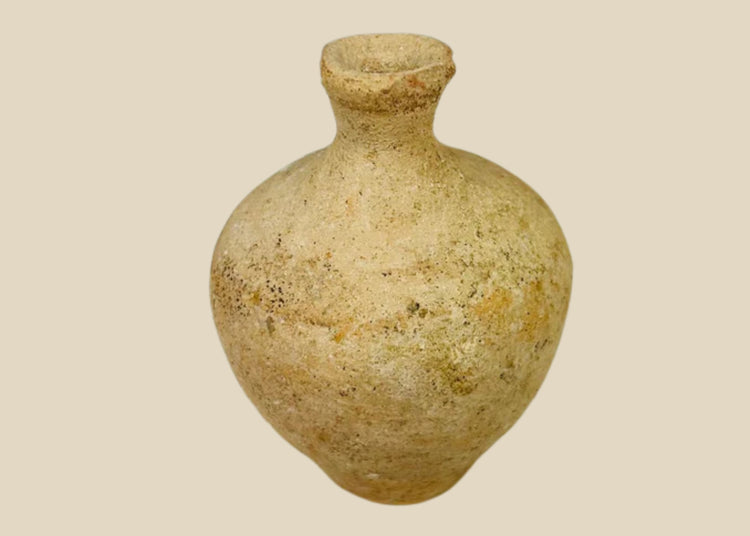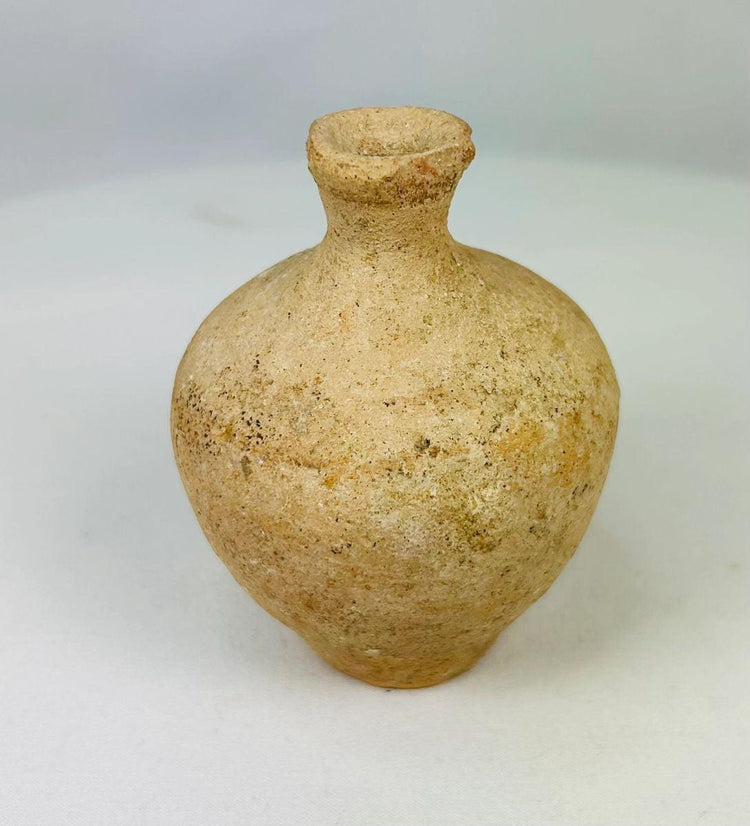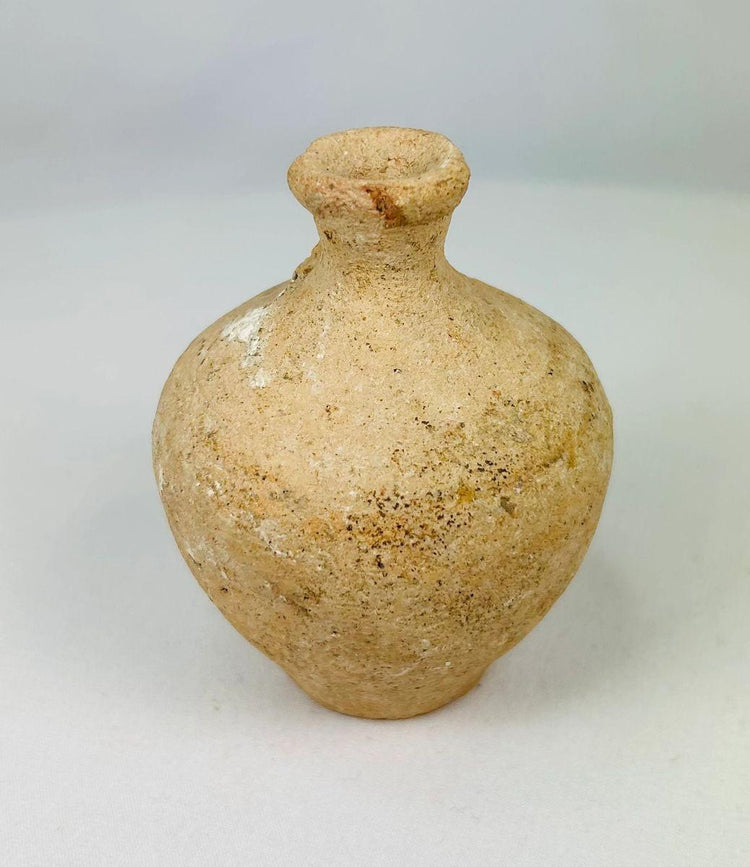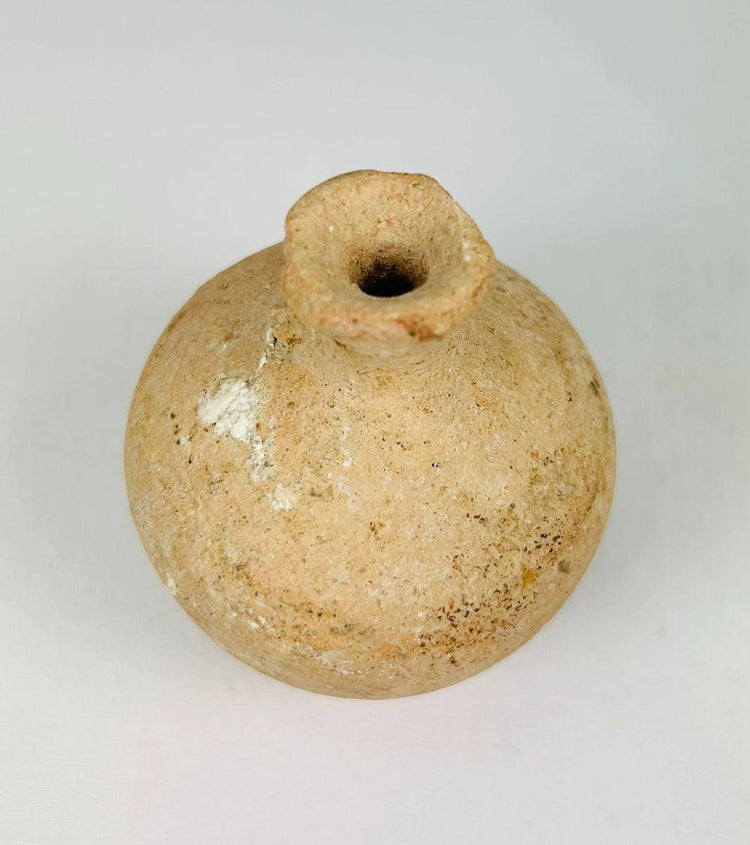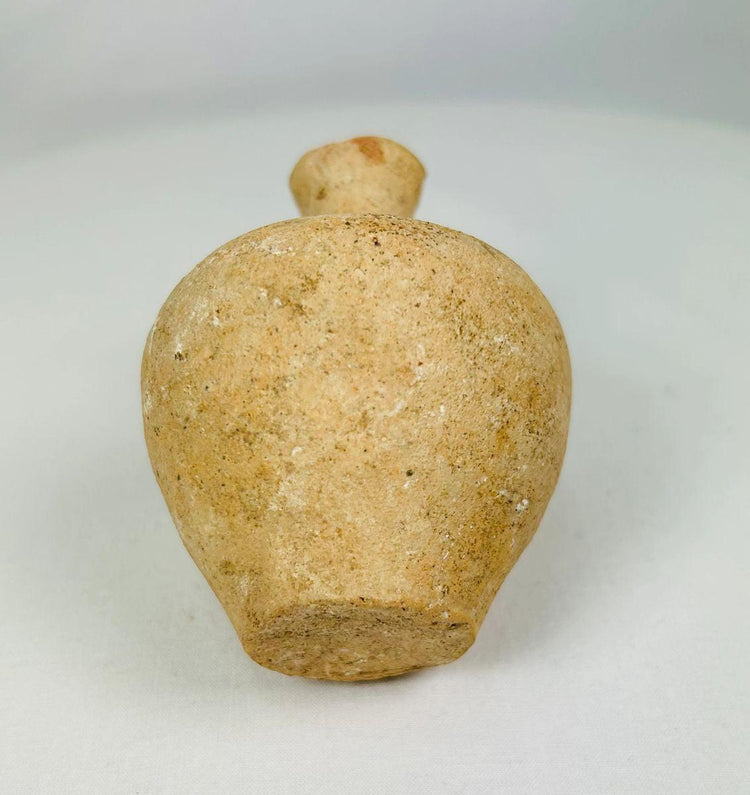Roman Empire Terracotta Juglet | Flared-Rim Domestic Vessel | Circa 1st–3rd Century CE
Description
More
Less
Historical Context & Origin
Region: Roman Empire
Material: Terracotta
Period: 1st–3rd Century CE
Description
This Roman terracotta juglet is a superb example of utilitarian craftsmanship from the 1st–3rd century CE. Designed for daily use in Roman households, it features a rounded body that tapers into a narrow neck with a flared rim, ideal for controlled pouring. Compact yet functional, it reflects the Roman balance of elegance and practicality in even the simplest domestic objects.
Features
- Rounded terracotta body with narrow neck and flared rim
- Small spout for controlled pouring of liquids
- Natural surface patina developed over centuries
- Compact, practical form suited for household use
Cultural Significance
Juglets such as this were used to store and dispense oils, perfumes, or other precious liquids in Roman households. Their refined design reflects the Roman approach to daily life, where functionality was combined with aesthetic consideration. As a domestic artifact, it provides insight into both the practical needs and artistic values of Roman society.
Condition
The juglet is well-preserved, retaining its structural integrity. Minor wear and a natural patina add authenticity and highlight its long history.
Dimensions (approximate)
Height: 3 in
Age
Circa 1st–3rd Century CE
Description
Historical Context & Origin
Region: Roman Empire
Material: Terracotta
Period: 1st–3rd Century CE
Description
This Roman terracotta juglet is a superb example of utilitarian craftsmanship from the 1st–3rd century CE. Designed for daily use in Roman households, it features a rounded body that tapers into a narrow neck with a flared rim, ideal for controlled pouring. Compact yet functional, it reflects the Roman balance of elegance and practicality in even the simplest domestic objects.
Features
- Rounded terracotta body with narrow neck and flared rim
- Small spout for controlled pouring of liquids
- Natural surface patina developed over centuries
- Compact, practical form suited for household use
Cultural Significance
Juglets such as this were used to store and dispense oils, perfumes, or other precious liquids in Roman households. Their refined design reflects the Roman approach to daily life, where functionality was combined with aesthetic consideration. As a domestic artifact, it provides insight into both the practical needs and artistic values of Roman society.
Condition
The juglet is well-preserved, retaining its structural integrity. Minor wear and a natural patina add authenticity and highlight its long history.
Dimensions (approximate)
Height: 3 in
Age
Circa 1st–3rd Century CE
You May Also Like
















